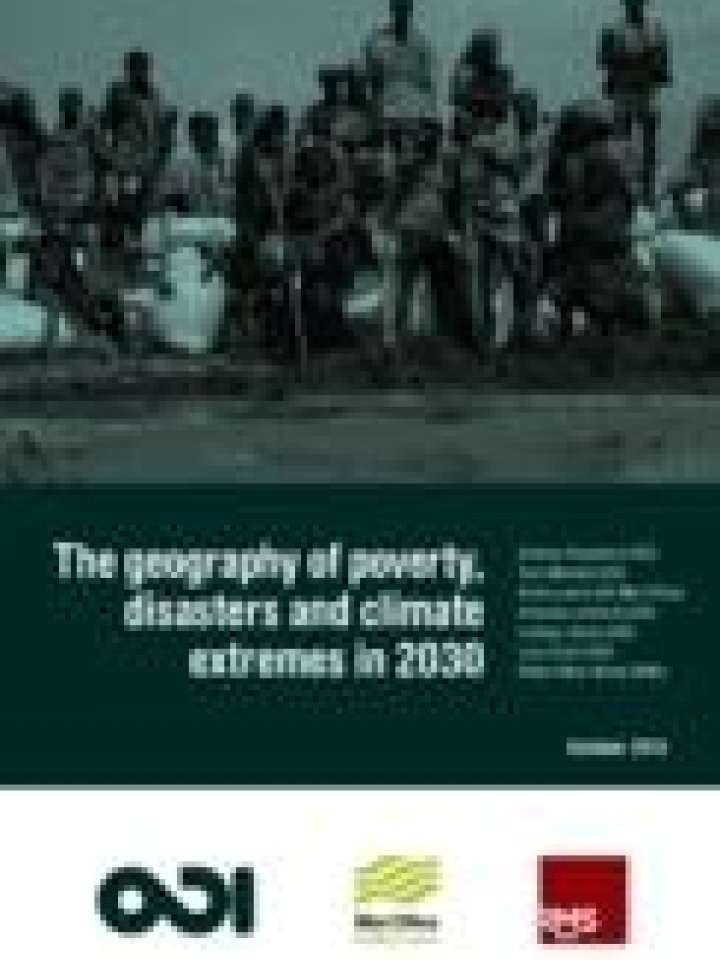The geography of poverty, disasters and climate extremes in 2030
This report examines the relationship between disasters and poverty. It concludes that, without concerted action, there could be up to 325 million extremely poor people living in the 49 countries most exposed to the full range of natural hazards and climate extremes in 2030. It maps out where the poorest people are likely to live and develops a range of scenarios to identify potential patterns of vulnerability to extreme weather and earthquakes – who is going to be vulnerable and why. These scenarios are dynamic: they consider how the threats may change, which countries face the greatest risk and what role can be played by disaster risk management (DRM).
The report argues that if the international community is serious about eradicating poverty by 2030, it must address the issues covered in this report and put DRM at the heart of poverty eradication efforts. Without this, the target of ending poverty may not be within reach. Key messages include: (i) extreme weather linked to climate change is increasing and will likely cause more disasters, especially drought, which can be the most important cause of impoverishment, cancelling progress on poverty reduction; (ii) up to 325 million extremely poor people will be living in the 49 most hazard-prone countries in 2030, the majority in South Asia and sub-Saharan Africa; (iii) the 11 countries most at risk of disaster induced poverty are Bangladesh, Democratic Republic of the Congo, Ethiopia, Kenya, Madagascar, Nepal, Nigeria, Pakistan, South Sudan, Sudan and Uganda; (iv) disaster risk management should be a key component of poverty reduction efforts, focusing on protecting livelihoods as well as saving lives; and (v) the post-2015 development goals must include targets on disasters and climate change, recognising the threat they pose to the headline goal of eradicating extreme poverty by 2030.
Explore further
